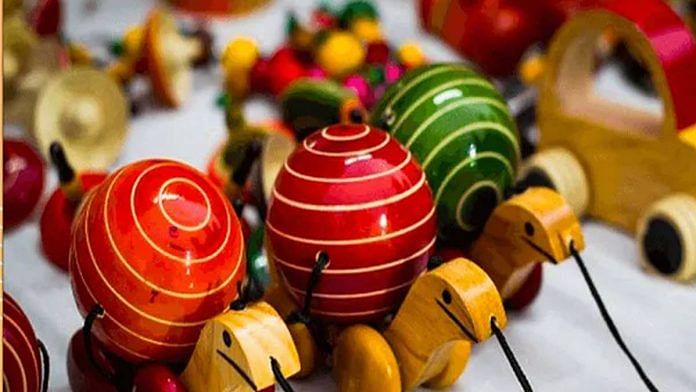New Delhi: Blocks, puzzles, masks, puppets and sand art are some of the new tools that schools in India will now use to teach children. The central government has developed a toy-based pedagogy, to help school children in the age group of 3 to 18 years understand basic concepts of science and mathematics and develop sensory and motor skills.
The policy document released by the Ministry of Education Wednesday is in accordance with the new National Education Policy 2020, which suggests experiential learning (learning by doing an activity) for all age groups.
“When we talk of toys in school education, our focus is mainly on indigenous toys and games. Toys such as the spinning top, which is popularly known as lattoo (tops), firki (spin-wheel), kites, dug-dugi (rattle), phirni (pinwheel), magic cards, flying birds, magic snake, etc. are some of the examples which are delightful play objects used in our country,” read the document.
It adds: “Identification of toys, puppets and games to be used at the appropriate school stages and in different subject areas needs to be done through a group of curriculum developers from different disciplines.”
With this, the government is also looking at reviving some of the old traditional games like gilli danda, chaupar (a traditional form of board game) and kabaddi.
The document also suggests using toys for infants and toddlers — those aged up to 3 years — at the preschool level for their initial development.
For example, the use of a squeeze ball has been suggested to help children improve their grasping power and wooden rattles to help them develop their hand-eye coordination and sense of hearing. Use of other toys, like building blocks, have also been suggested to teach them colours and numbers.
Manish Jain, a member of the faculty at the Indian Institute of Technology, Gandhinagar, and part of the institute’s Center for Creative Learning (CCL), has, along with his team, mapped the learning outcomes of toy-based pedagogy.
Speaking to ThePrint, he said, “Classrooms these days have somehow become insipid and boring. While learning a subject, the most important thing for a student is joy, and toy-based pedagogy helps with that. We are trying to make learning fun and interesting. When children look at a toy and engage with it, they ask questions, think, and their skills are developed. They are not simply cramming up things from a book and producing them on an answer sheet.”
Jain is currently training school teachers in the toy-based pedagogy. His team runs an online programme called ‘30-30 STEM’, which has lessons for educators on how to engage children with toy-based pedagogy.
“Toys and activities will play a very important role in learning. If you use a lot of activity while learning, you learn a lot more,” he said, adding that he has received wonderful responses from the teachers trained under their programme so far.
Jain and his team have also held some workshops with children from government schools and received encouraging feedback.
Also read: 80% of middle & secondary school students have exam anxieties, 45% body image issues: NCERT survey
A toy for every lesson
The pedagogy suggests use of different kinds of toys for different age groups, the CCL has found.
For example, for children in the age group of 8 to 11 years, magnets have been suggested to “develop observation and exploration and sense span”. The policy document also suggests the use of geometric solids as toys to play with, to “acquire understanding about shapes, explore the area and perimeter of simple geometrical shapes and estimate the volume of a solid body in known units.”
For children in higher age groups (14 to 18 years), the use of a toy self-revival kit has been suggested to help children “enhance their emotional management skills, intelligence, self-awareness, introspection and decision making”.
Developing a balloon powered toy-car has been suggested to study “pressure, force, Newton’s Third Law of Motion”.
The policy document also suggests introducing indigenous toys and games to teach children about the history and culture of India.
For example, it suggests an introduction to Kondapalli toys (painted wooden toys) traditionally made in Andhra Pradesh, torans (wall-hangings) and cloth dolls made in Gujarat and Rajasthan, and marble balls, bangles and animal figures from Uttar Pradesh.
It also suggests introducing clay pottery and miniatures that resemble those in Harappan times so that the children learn about civilisations.
(Edited by Poulomi Banerjee)
Also read: Indian 3rd graders better in English than Hindi, Bihar students top Math, finds NCERT survey



